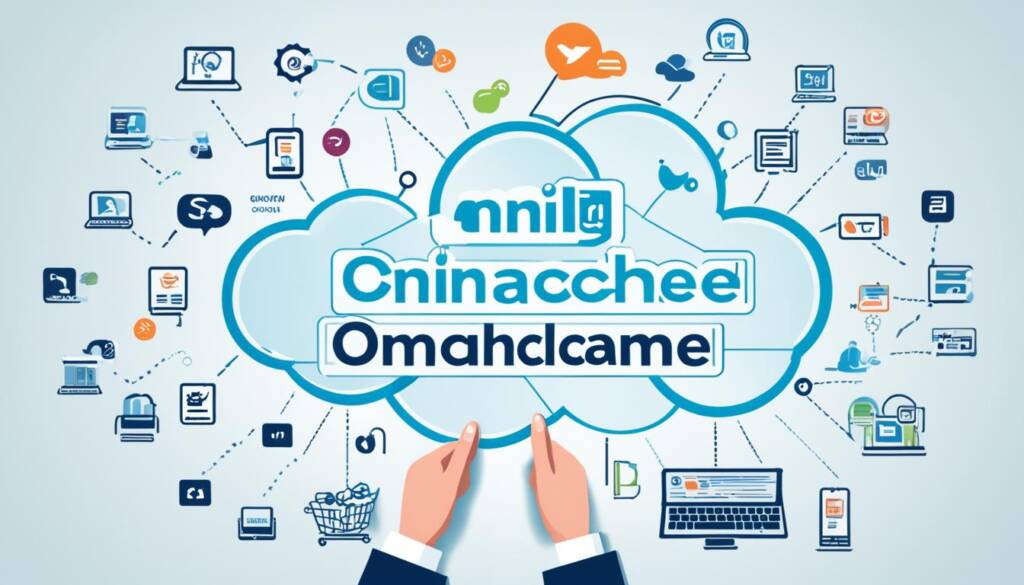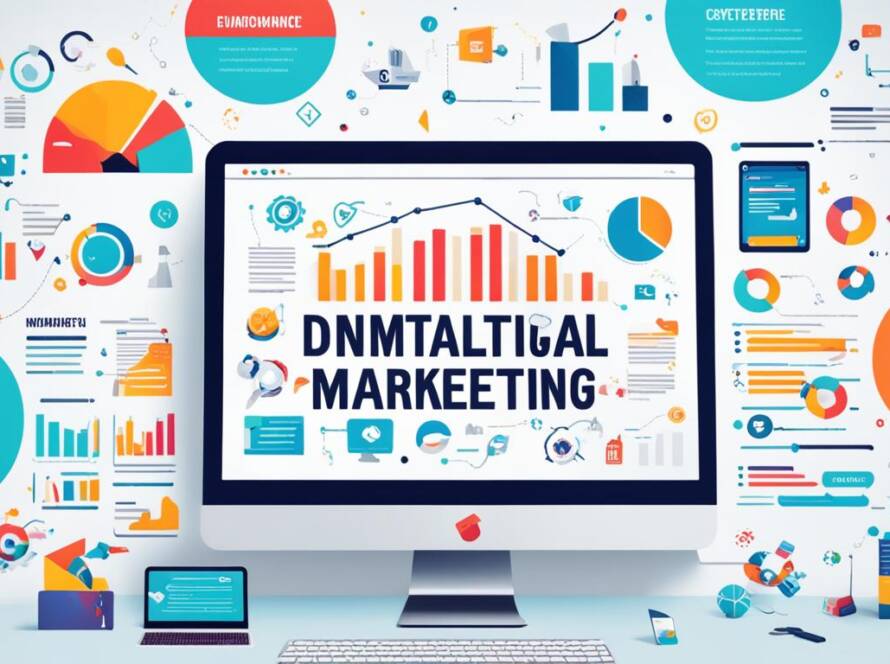Understanding omnichannel and multichannel strategies is key in today’s business world. Multichannel strategies reach out to customers on various platforms, like websites and stores. Omnichannel strategies, however, link these platforms together for a smooth customer journey. This approach aims for a unified brand experience, which is great for improving customer experience across all channels.
A study by Arlington Research found that 49% of businesses using omnichannel strategies outsourced their operations in 20201. Over half of these businesses also plan to outsource more in the future1. Omnichannel retail uses new tech, like in-ad streaming, to connect with customers everywhere.

Key Takeaways
- Omnichannel strategies integrate all channels to offer a cohesive customer experience.
- Multichannel strategies involve independent engagement platforms like websites and physical stores.
- 49% of omnichannel merchants outsourced their operations in 20201.
- More than 50% of omnichannel merchants prioritise outsourcing in the future1.
- Omnichannel retail leverages innovative methods for a connected brand presence.
Understanding Multichannel Strategies
In today’s digital world, using multichannel strategies is key for brands to reach more people and engage with customers. These strategies use different channels like social media, email, and TV to talk to customers. Each channel works on its own, leading to campaigns that may not work together well. Let’s explore what makes multichannel strategies unique and how they work.
What are Multichannel Strategies?
Multichannel strategies help brands talk to customers across various platforms without linking them together. For example, retailers might run separate online and offline campaigns to reach more people. About 78% of retailers find it hard to give customers a unified experience across channels2. Yet, these strategies let brands meet different customer needs by using each platform’s strengths.
How Multichannel Strategies Work
The main idea is to touch customers through many channels. Customers use each medium for different reasons. For instance, they might look up a product online but buy it in a store, which happens in 20% of cases2. HSBC’s strategy shows how this works well, engaging 91% of targeted customers and making over 20 million euros3. By improving multichannel efforts, companies make sure they’re where their customers are.
Benefits and Challenges of Multichannel Strategies
One big plus of multichannel strategies is reaching more customers. Brands can tailor their messages for each channel, increasing their chances of connecting with the right people. For example, BUT’s use of WhatsApp in their strategy got a 57% click-through rate3. But, these strategies also have challenges, like managing different channels and tracking performance. Strong multichannel integration strategies are needed to overcome these issues.
Understanding the differences between omnichannel and multichannel strategies is crucial. Multichannel focuses on many contact points, while omnichannel aims for a seamless customer experience4. For example, omnichannel customers often buy 10% more than those using just one channel2, showing how integrated support changes customer behaviour.
| Aspect | Multichannel Strategy | Omnichannel Strategy |
|---|---|---|
| Focus | Product-centric | Customer-centric |
| Channel Management | Independent channels | Integrated channels |
| Customer Experience | Fragmented | Seamless |
Omnichannel vs Multichannel Strategies
The debate between omnichannel and multichannel tactics has grown in recent years. Both aim to improve customer engagement but differ in how they do it.
Defining Omnichannel Strategies
Omnichannel strategies combine different channels for a unified customer experience. This ensures consistent branding and messaging across all platforms, online and offline. It makes the customer’s journey smooth from start to after-sales support. Omnichannel marketing offers a seamless and personalised experience across all channels5.
The Key Differences Between Omnichannel and Multichannel
It’s important to know the differences for businesses wanting to improve customer engagement. Multichannel marketing uses more than one channel to reach customers. But, it often keeps the customer’s journey in each channel separate, causing a disjointed experience5. Omnichannel, however, links all channels together for a unified shopping experience, making the customer’s journey consistent.
For instance, multichannel focuses on defining purchase paths by channel, not by customer actions6. Omnichannel, on the other hand, needs a strong technology system and unifies customer data for a successful marketing strategy5.
Benefits of Omnichannel Over Multichannel
Omnichannel marketing has clear advantages over multichannel. It shows higher engagement and conversion rates7. This approach can increase conversion rates by 107% and revenue by 112%5.
Moreover, omnichannel requires big investments and ongoing IT support6. But, the investment pays off, as seen with OYO, which saw a five times increase in CTR and more engagement7
In summary, omnichannel puts customers first, offering flexibility and consistency across all touchpoints. For those wondering why choose omnichannel, it’s because it connects and aligns all marketing channels. This approach leads to stronger customer loyalty and retention, showing the benefits of omnichannel over multichannel.
Conclusion
In today’s business world, making customers happy is key. Omnichannel strategies are all about giving customers a smooth experience across all platforms. This approach connects online and offline touchpoints, making customers feel valued and boosting their loyalty89.
Omnichannel strategies also bring big benefits. They let businesses use data from different platforms to understand customers better8. This helps in offering unique and consistent experiences, which keeps customers coming back9. Using various channels to communicate also makes customers happier and more loyal, helping businesses grow9.
But, multichannel strategies have their own strengths. They help reach more people and let businesses connect with customers in different ways89. Yet, omnichannel strategies are better at meeting today’s need for easy, connected experiences. With more people shopping online and using their phones, omnichannel wins out.
Source Links
- https://www.bigcommerce.com/blog/omnichannel-vs-multichannel/
- https://www.channelsight.com/blog/omni-channel-approach
- https://www.sinch.com/blog/omnichannel-vs-multichannel/
- https://gettalkative.com/info/omnichannel-vs-multichannel-key-differences
- https://www.bloomreach.com/en/blog/omnichannel-vs-multichannel-whats-the-difference
- https://www.acquia.com/blog/omnichannel-vs-multichannel
- https://www.moengage.com/learn/omnichannel-vs-multichannel/
- https://www.storyly.io/post/omnichannel-marketing-vs-multichannel-marketing-key-differences
- https://www.sopranodesign.com/multichannel-vs-omnichannel/



